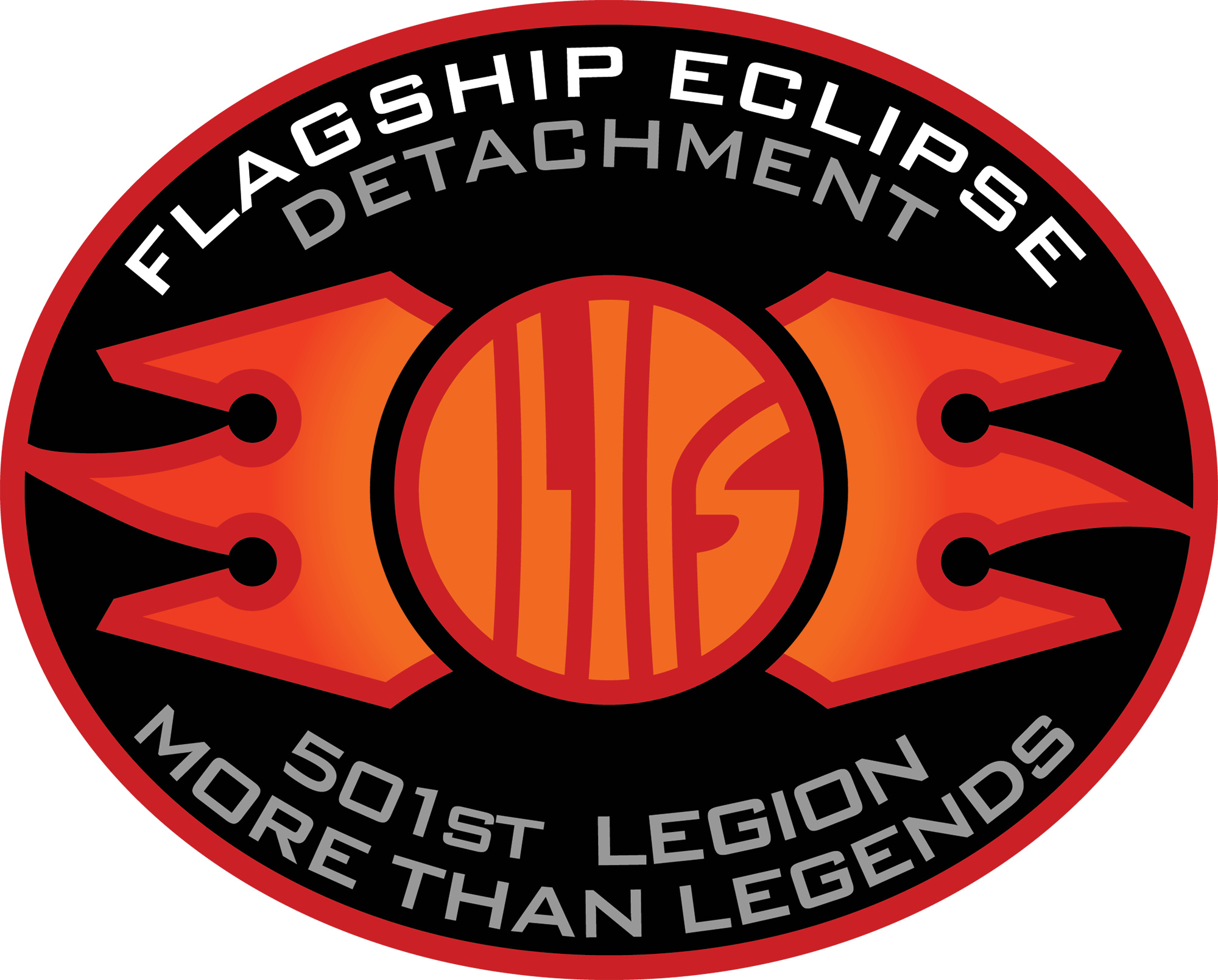
When I think of lesbian representation in video games, my mind goes to the likes of Life is Strange, Dragon Age, and Mass Effect. But these video games give you the option to decide whether your character is gay or not. It’s a choice, unlike the polar opposite of sexuality in real life. What we hardly ever see in all media is a canon lesbian character, and even when we do, the fiction shifts to where it could only be enjoyed by the community it was made for. Yet, The Last of Us manages to offer a lesbian character that is so well-written and a romance so believable—it’s just normal. And that’s how it should be.
You may have noticed Ellie and Dina’s relationship lacks influence from pre-existing gay culture. In this setting, their history is connected directly to Jackson. It’s all they’ve ever known. There’s no judgment based on what we’ve seen from this series (aside from bigot Seth). In this apocalyptic setting all about surviving every day, hardly anyone gives a damn what your sexuality is.
The Last of Us isn’t an LGBT game. It’s a post-apocalyptic story that happens to include a queer character. It is normalizing these same-sex relationships, both including a lesbian and gay couple (albeit Bill and Frank’s story was far larger in the TV show adaptation). What’s important about games like The Last of Us is that it shows different types of love. Much like Arcane which shows the love between a parent and child, sisters, friends-turned-brothers, straight love, and queer love; The Last of Us doesn’t try to hide how real and mature themes impact everyone, regardless of gender, religion, or culture.
Warning: Story spoilers for The Last of Us Part II and Season 2 of the TV show are present below.
The Lack of Good Romance in Video Games
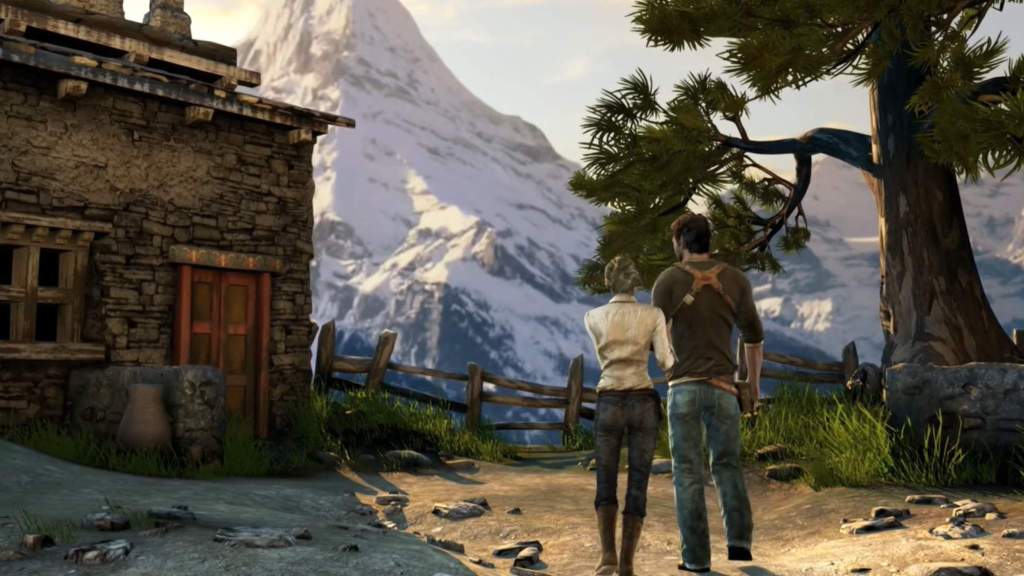
There aren’t many great portrayals of romance in video games, period. There’s Haven, It Takes Two, Uncharted, Final Fantasy, Yakuza, and The Legend of Zelda as the most obvious picks, but that’s where the list pretty much ends. Most romance in video games is surface-level, often suited towards the male gaze standard, or included as backstory and “depth” for a character’s development. Sexual relationships are easy to implement in a setting where someone might die, as the stakes are increased when a loved one is in danger.
As Ellie’s story is about abandonment and revenge, it makes sense for there to be a prominent romantic figure in her life. We saw the importance of love in every form for Ellie in Left Behind, where a platonic relationship shifts into romance, just for it to end before it even started. While you could argue this used queer love to make Ellie and TLOU stand out, we all know this series is enjoyed regardless of Ellie’s sexual orientation—just look at how much everyone loves Joel. Why queer love in this instance works is because TLOU is by no means just about Ellie.
RELATED: The Last of Us Is All About Perspective (And It’s Time Viewers Figured That Out)
Her love story is only important when she’s the main character. It acts as her stakes in the story, the lengths she’s willing to go, and who she needs to think about when obsessing over revenge. Look at how this behavior changed Abby—her counterpart. When the POV swaps to Abby, we get to see her love story with Owen (or lack thereof because of Abby’s choices), which is equally as important as Ellie’s. The literal swap of protagonist/antagonist is there so we can focus on how love develops and impacts both characters. It’s also there to show how queer love is exactly the same as straight love.
What Makes Ellie and Dina’s Relationship So Special
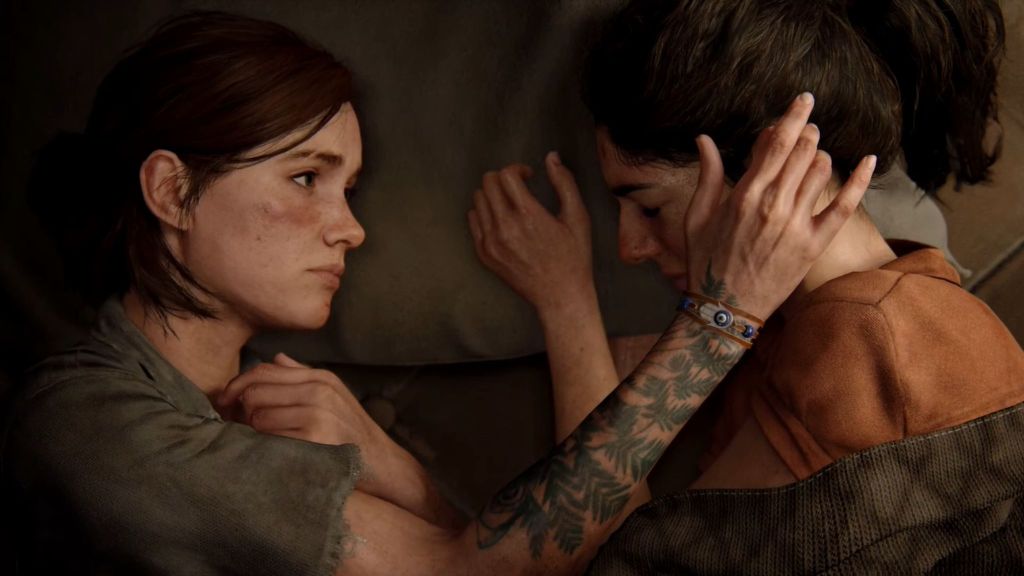
Unlike multiple-choice romance, there’s nuance in Ellie and Dina’s relationship. It’s not there to entertain or please the viewer, but is important to understanding who Ellie and Dina are as believable characters. It’s as important as Joel and Ellie’s father-daughter dynamic, Abby and Lev’s elder sister-younger brother dynamic, or Joel and Tommy’s brother dynamic. The inclusion of Dina being bisexual is smart as it opens the opportunity for conflict, a format that’s used in all fiction. Just like straight love, neither sexuality is brought up for discussion. It’s subtle in Part II and only briefly comes up in passing as Joel assumes Ellie is straight years before the events of the second game.
Part II is a drawn-out full circle moment of Ellie’s insecurities and fears of being alone coming to fruition. She told Joel everyone she’s ever cared about has either died or left her. This would come true in Part II in multiple instances: Joel and Jesse’s death, Dina being pregnant with Jesse’s child, Tommy feeling betrayed, and Dina and J.J. leaving her. Abandonment and control are common themes in Ellie’s life.
Ellie and Dina’s romance is easy to understand yet layered, beautifully crafted like every other TLOU relationship. We get subtlety in their affections towards each other at it’s established in Ellie’s journal and Dina’s pursuit at the party. Their conversations are natural, with chemistry and banter on constant show as you explore Seattle and the lookout routes surrounding Jackson. The portrayal of love is shown through their actions, not words; like how Dina was willing to risk breathing in spores when Ellie’s gas mask broke.
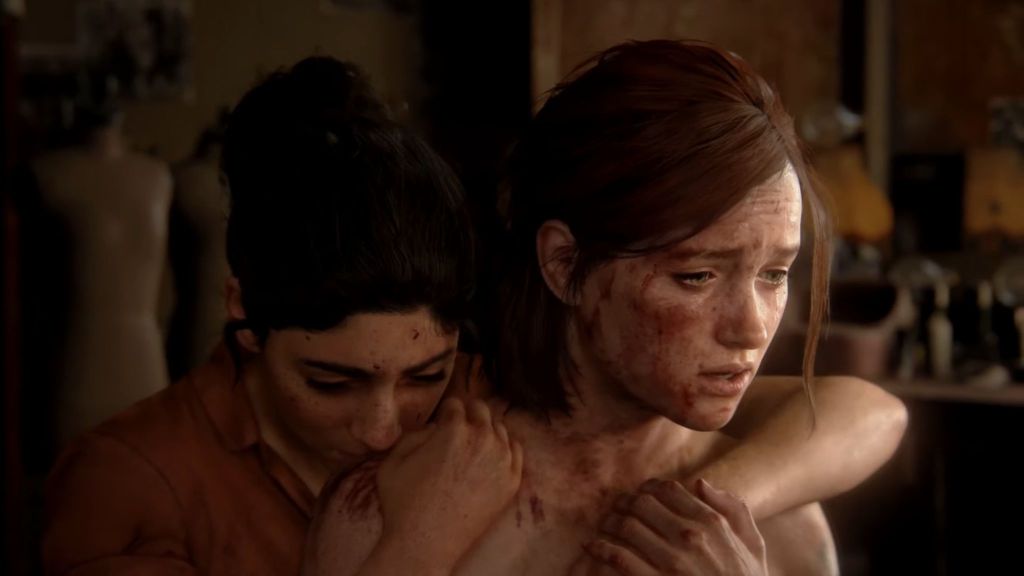
The best scene that perfectly illustrates Ellie and Dina’s love for one another is when Ellie returns to the theatre after torturing Nora. It’s a mostly silent scene where their facial expressions and actions speaks for itself. Ellie is unable to look at Dina even as Dina looks after her. It is an aching scene that shows Ellie’s vulnerability. Dina’s touch almost acts as a release, validation, and reassurance for Ellie. Instead of fearing her, Dina holds her and tells her it’s okay, because she can see Ellie’s regret. This scene is a reminder for us and Dina that Ellie’s still in there.
Dina’s priorities of JJ and Ellie (in that order) are shown by Dina protecting and calming JJ before consoling Ellie. It’s another great way to show their relationship in a realistic light, rather than everything being sunshine and rainbows, where nothing else matters but their love for one another. It also tells us how Dina is struggling and hurting because of everything that’s happened.
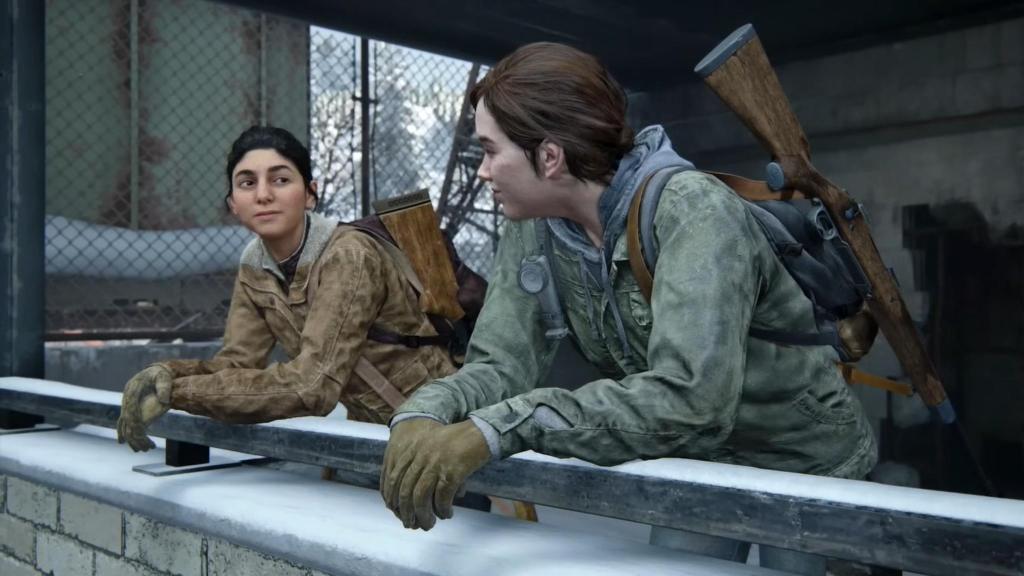
While Ellie tries to protect Dina physically, Dina does the same emotionally. The first and last time we hear Ellie tell Dina she loves her is when she decides to look for Abby again. As a queer person—I’m allowed to say—the word love is massively overused in the community. So for it to only be used once in this relationship, tells us how little the pair speak about their feelings, but are aware of them because of their actions. Ellie’s words contradict here as Dina demands proof of her love for this is how their relationship has run all along.
Ellie and Dina’s relationship is real because it includes highs and lows throughout. Their love for one another is something everyone should be able to relate to. There’s consistency in the relationship as it’s about protecting one another and enjoying the time they have together. It’s about truly living in an undead world where you could get bit and turn any moment. But just like Abby and Owen, Ellie and Dina couldn’t last as Ellie was lost when they got together, her mind purely focused on exacting revenge. TLOU reminds us that timing is everything.
Ellie and Dina Feel Real
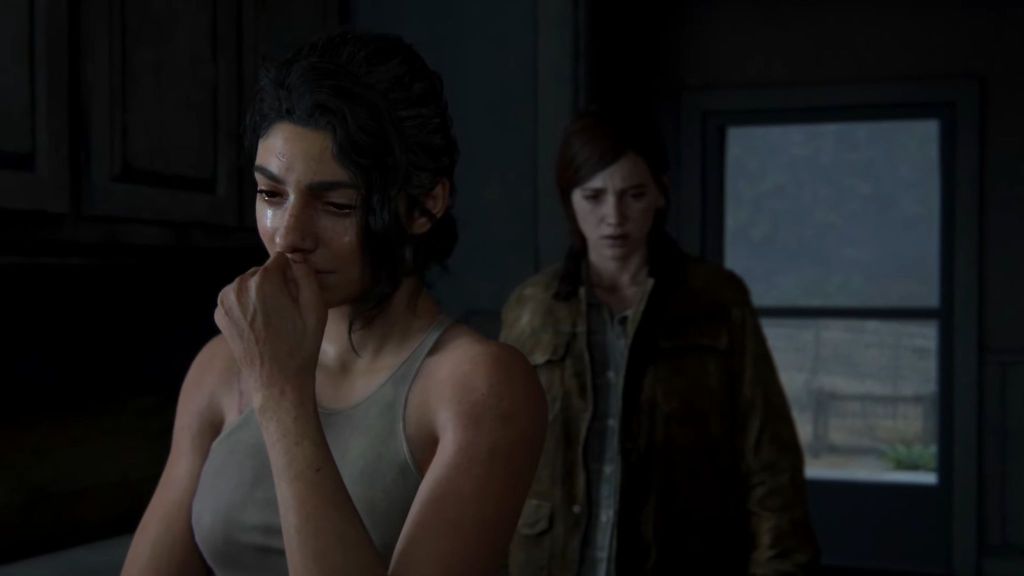
I need more relationships like Ellie and Dina’s because they’re real. We can all hope for a happy ending for Ellie and Dina, but that’s not how the world works. Love in video games is often empty or tantalizing. It is through shows like Arcane and games like The Last of Us that we’re shown realistic portrayals of all types of love, which greatly strengthens the content of the media we’re consuming, as it doesn’t sugar coat anything. If Ellie and Dina’s relationship were perfect, it’d take away from the gut-wrenching tale of Part II and lessen the seriousness of the setting and plot.
We need realistic portrayals of love because media can shape our perception of how things are. The perfect love story doesn’t exist, and we shouldn’t be aiming for a fantasy. Otherwise, all we’ll ever be is disappointed. Ellie and Dina don’t get to have a happy ending (mostly because of the choices Ellie made), and that’s okay. Fiction or not, the happy ever after, picture-perfect love doesn’t exist—and instead requires work to maintain. The love story seen in The Last of Us captures just that, and I need it to become the standard.
The post The Last of Us Makes Me Long for More Relationships Like Ellie and Dina appeared first on ComicBook.com.
